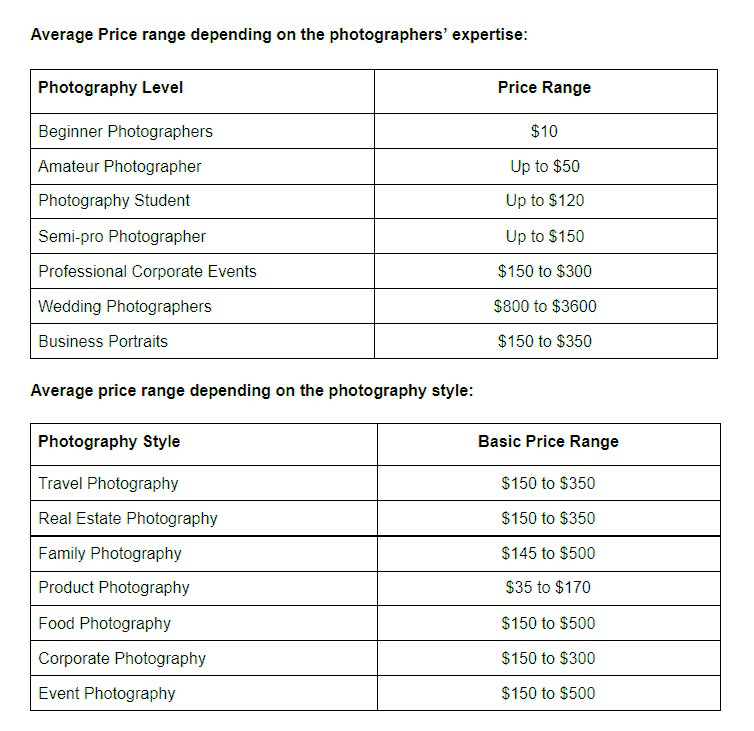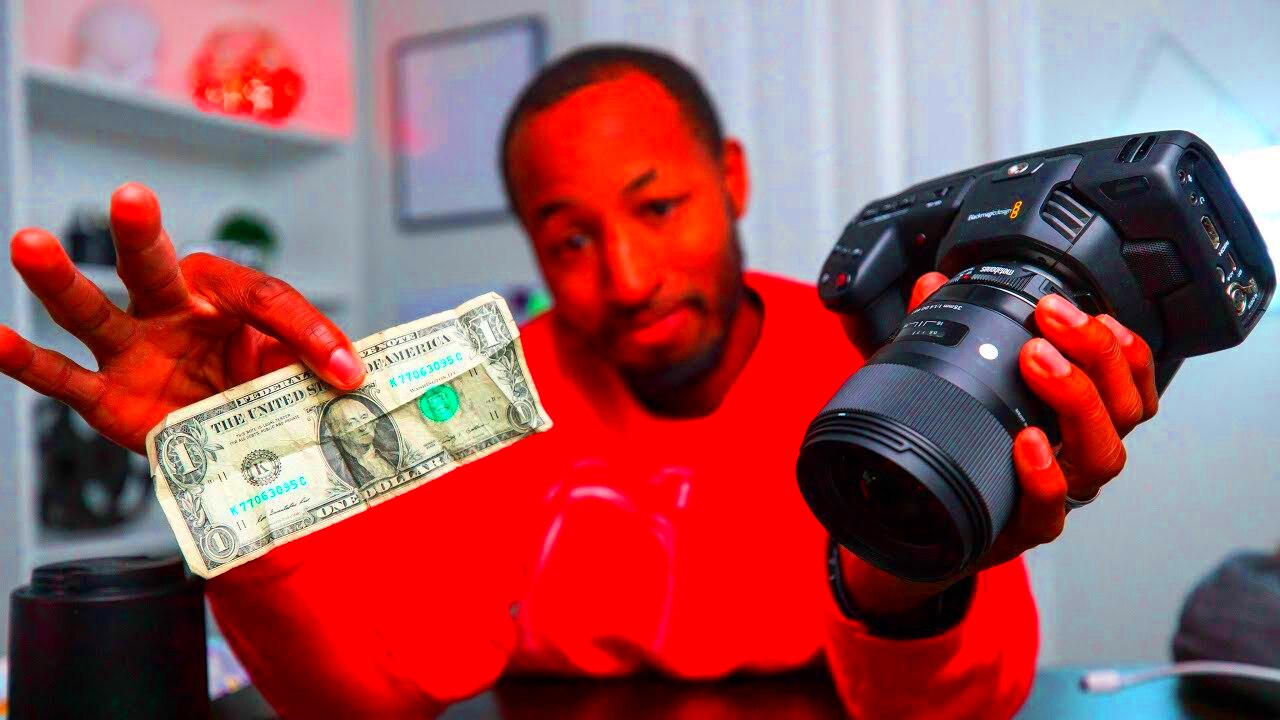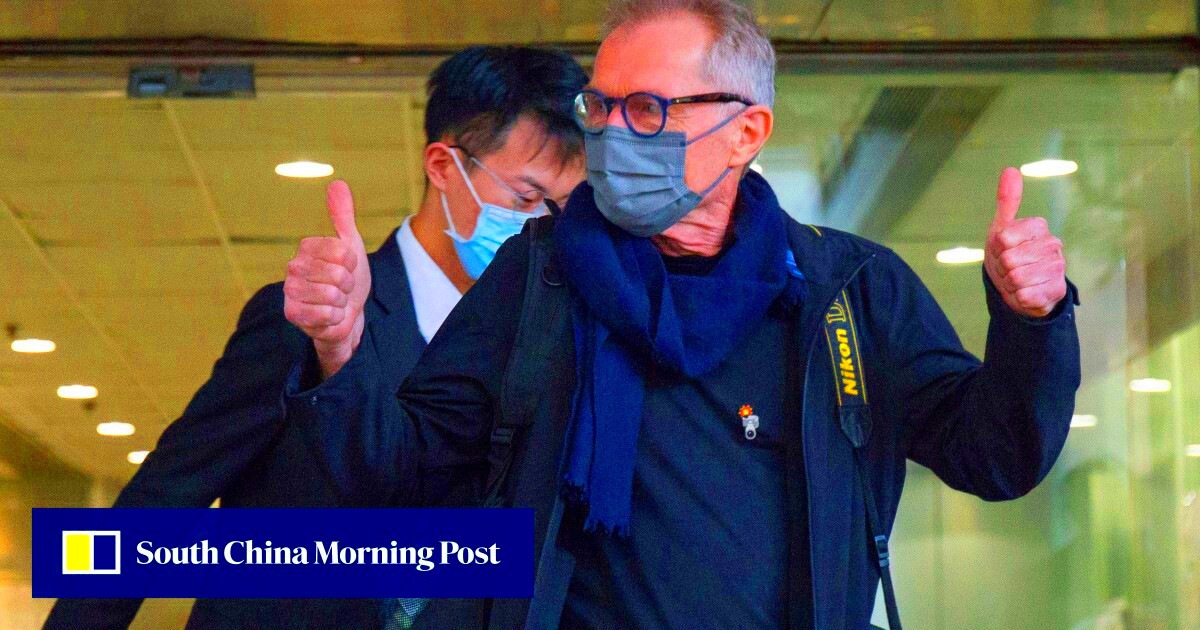Freelance photographers offer a wide range of services, but their charges can vary significantly. The price you pay for a freelance photographer often depends on several factors, such as the type of photography, the photographer's experience, and even the location. Understanding how photographers determine their rates can help you make informed decisions when hiring one. Whether you need a photographer for an event, product shoot, or personal portrait, it’s important to know what influences pricing so that you can plan your budget accordingly.
Factors That Affect Freelance Photography Rates

Freelance photography rates aren't fixed and can fluctuate depending on various factors. Here are the key elements that affect how much you’ll be charged:
- Type of Photography: Different photography niches, like portrait, wedding, event, or product photography, may have different pricing structures. For example, wedding photography typically costs more because of the time and equipment required.
- Experience Level: A photographer with more years of experience often charges more than someone just starting out. Their skill and portfolio tend to justify higher rates.
- Location: Rates can vary based on where the photographer is located. Photographers in big cities or high-demand areas often charge more than those in smaller towns or rural locations.
- Time Spent: The amount of time the photographer needs to complete the job can impact their rate. This includes pre-shoot preparations, actual shooting time, and post-production work.
- Equipment and Editing: Photographers often use high-end cameras and editing software, which can contribute to the cost of their services. More advanced equipment and editing may require higher rates.
Also Read This: How to Favorite a Gig on Fiverr: A Step-by-Step Guide
How Experience Influences Photography Charges

One of the most significant factors influencing a freelance photographer's charges is their experience. As photographers gain more experience, they refine their skills, build a stronger portfolio, and develop better client relationships, which allows them to charge higher rates. Here's how experience impacts pricing:
- Beginner Photographers: Newer photographers typically charge lower rates as they work to build their portfolio and attract clients. They may have fewer years of experience but are eager to grow their business.
- Intermediate Photographers: With a few years of experience, intermediate photographers have a solid portfolio and a good understanding of the market. They often charge more than beginners but are still competitive in price.
- Experienced Photographers: Professionals with years of experience have mastered their craft and established a strong reputation. They charge premium rates for their services, reflecting their expertise and reliability.
In addition to technical skills, experienced photographers may also offer specialized services, such as advanced photo editing, unique lighting techniques, or expert direction, which further justifies their higher charges.
Also Read This: How to Rank a Gig on Fiverr
The Importance of Location for Photography Pricing

The location where a photographer operates can have a big impact on their rates. Photographers in large cities or popular tourist destinations often charge higher fees compared to those in rural or less-demanded areas. There are a few reasons why location plays such an important role in pricing:
- Market Demand: In big cities, there is usually more demand for photography services, so photographers may charge higher prices to reflect that demand. In contrast, smaller towns might have fewer clients, leading photographers to lower their rates to attract business.
- Travel Costs: Photographers may charge more for travel expenses if a job requires them to go outside their usual service area. This includes transport costs, lodging (if necessary), and the time spent traveling.
- Competition: In metropolitan areas, photographers may face more competition. To stand out, they may charge higher fees but offer more specialized services. In smaller locations, there could be fewer photographers to choose from, but rates may still be lower due to less competition.
- Local Economy: The local economy influences what people are willing to pay. In wealthy areas, clients might be willing to pay more for premium photography services, while in lower-income regions, photographers may need to adjust their rates to be competitive.
When hiring a freelance photographer, it's important to consider the location to help gauge whether the rates are reasonable for the area. A photographer’s location can give you insight into their pricing structure and service offerings.
Also Read This: How to Cancel a Fiverr Order as a Seller
Understanding the Different Pricing Models in Photography
Freelance photographers can structure their pricing in various ways depending on their business model and the type of work they do. Understanding these different pricing models will help you find a photographer whose charges align with your needs and budget. Here are the most common pricing models:
- Hourly Rate: Some photographers charge an hourly rate, which works well for short shoots or events. The rate often includes the time spent shooting as well as post-production work, like editing photos. Hourly rates can vary depending on the photographer’s experience and the complexity of the shoot.
- Day Rate: For longer events or shoots, photographers may offer a day rate. This typically covers a full day’s work, including setup, shooting, and basic post-production. Day rates are often preferred for weddings, corporate events, or full-day shoots.
- Project-Based Pricing: In some cases, photographers may offer a flat rate for a specific project. This could include everything from initial consultations to the final edited photos. Project-based pricing is common for services like product photography or portrait sessions.
- Package Pricing: Many photographers offer predefined packages with set prices. These packages often include a bundle of services such as a certain number of hours, photos, and prints. Package pricing is common for weddings, family portraits, and other milestone events.
- Usage Rights/License Fees: For commercial work, photographers may charge additional fees based on how their images will be used. This could include licensing fees for images that will be used in advertisements or on websites. The more extensive the use, the higher the fee.
When choosing a photographer, it’s crucial to understand the pricing model they use and make sure it fits your specific needs. Be clear about what’s included in each model to avoid surprises later.
Also Read This: How to Make a Fiverr Gig Image on Canva
How to Negotiate Photography Rates with Freelancers
Negotiating photography rates with freelancers doesn’t have to be a daunting task. If you're on a budget or want to ensure you get the best deal, a little negotiation can go a long way. Here are some tips for negotiating successfully:
- Do Your Research: Before you start negotiating, research the going rates for photographers in your area. Having a general idea of standard prices will give you leverage when discussing rates with a photographer.
- Be Clear About Your Budget: Let the photographer know your budget upfront. This can help them tailor their proposal to meet your needs without overstepping your financial limits. Being honest about what you can afford will also help set realistic expectations.
- Consider the Photographer’s Experience: If the photographer has significant experience, they may be less willing to lower their rates. Instead of pushing for a lower price, you could negotiate additional services, like more photos or extra editing time, within your budget.
- Offer Exposure or Future Work: If you’re working with a photographer who’s just starting out, you might be able to negotiate a lower rate in exchange for helping them build their portfolio. Additionally, if you plan on needing photography in the future, offering the promise of repeat business could motivate them to offer a discount.
- Be Flexible with Timing: If you can be flexible with your shoot dates, you may be able to get a discount. Photographers may be willing to offer a lower rate during off-peak times when they have fewer bookings.
- Understand What’s Included: Make sure to ask for a breakdown of the costs and services included in the rate. This can help you understand exactly what you’re paying for and prevent any confusion down the line.
Effective negotiation is about finding a balance between what you need and what the photographer can offer. Be respectful of their skills and time while discussing ways to make the deal work for both parties.
Also Read This: How to Add More Than 3 Pictures on Fiverr
Common Mistakes to Avoid When Setting Photography Prices
Setting the right price for photography services can be tricky, especially for freelance photographers. While it’s essential to remain competitive, overpricing or underpricing can both be detrimental to your business. Here are some common mistakes to avoid when determining your photography rates:
- Undervaluing Your Work: Many photographers, especially beginners, tend to undercharge for their services, either out of a desire to gain clients or to compete with others. This can lead to burnout and make it difficult to cover expenses. It’s important to factor in your time, skill, and costs when setting prices.
- Not Accounting for Expenses: If you fail to include your business expenses—like equipment costs, software, insurance, and marketing—your rates may not cover your overhead. Always factor these into your pricing to ensure you’re making a profit.
- Ignoring Market Research: Not researching what other photographers in your area are charging can lead to overpricing or underpricing your services. Always keep an eye on the competition and adjust your rates accordingly. Pricing too high or too low can hurt your reputation and client base.
- Being Inconsistent with Pricing: Inconsistent pricing across different jobs can confuse clients and hurt your reputation. Make sure you set clear, transparent rates for each type of photography service you offer and stick to them.
- Failing to Factor in Post-Production Time: Post-production work (like editing and retouching photos) takes time and should be reflected in your pricing. Many photographers only charge for shooting time and overlook the editing process, which can lead to undervaluation of their time.
- Not Offering Packages or Bundles: Offering just a basic service with no options for different budgets can turn potential clients away. Consider offering packages that cater to different needs, like an affordable package for personal shoots or a premium option for larger events like weddings.
Avoiding these common pricing mistakes can help ensure that you are charging fairly for your work, covering your expenses, and setting yourself up for long-term success.
Also Read This: What is Fiverr Commercial Use?
FAQ
Here are some frequently asked questions about freelance photography pricing:
- What should I include in my photography rates? Your rates should cover your time, equipment, travel expenses, post-production work (like editing), and any other costs associated with the job. Make sure to clearly outline what is included in your rates to avoid misunderstandings.
- How much should a beginner photographer charge? As a beginner, you might start by charging less to build your portfolio. Generally, beginner photographers charge between $50 to $150 per hour, depending on their location and the type of shoot. However, it’s important to gradually increase your rates as you gain experience and build a reputation.
- How do I know if my rates are too high? Compare your rates with other photographers in your area or within your niche. If your rates are significantly higher than others with similar experience, you may need to adjust them. Consider the value you're offering and ensure your rates align with what clients are willing to pay.
- Can I offer discounts or negotiate my rates? Yes, you can offer discounts or negotiate rates based on specific circumstances, such as repeat business or referrals. However, ensure that you don’t undervalue your services, and be clear about what’s included in the discounted rate.
- Do I need a contract for freelance photography work? Yes, always use a contract for freelance work. A contract ensures that both you and the client are on the same page regarding the project details, pricing, and payment terms. It helps protect both parties and minimizes misunderstandings.
Conclusion
Setting the right price for your freelance photography services is essential for a successful business. It requires a good understanding of your costs, your market, and your value as a photographer. By avoiding common pricing mistakes, researching your competition, and being transparent with clients, you can establish a pricing strategy that ensures your work is valued while still being competitive. Remember, as you gain more experience, you can adjust your rates accordingly, so don’t be afraid to increase them as your skills grow. Whether you’re just starting or looking to refine your pricing model, these tips can help you stay on track and build a sustainable photography business.




